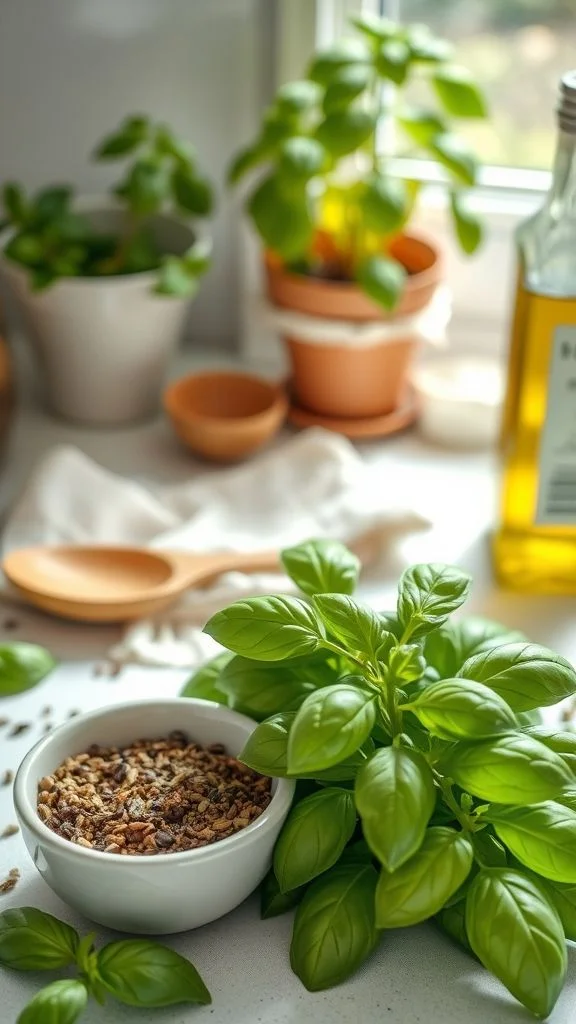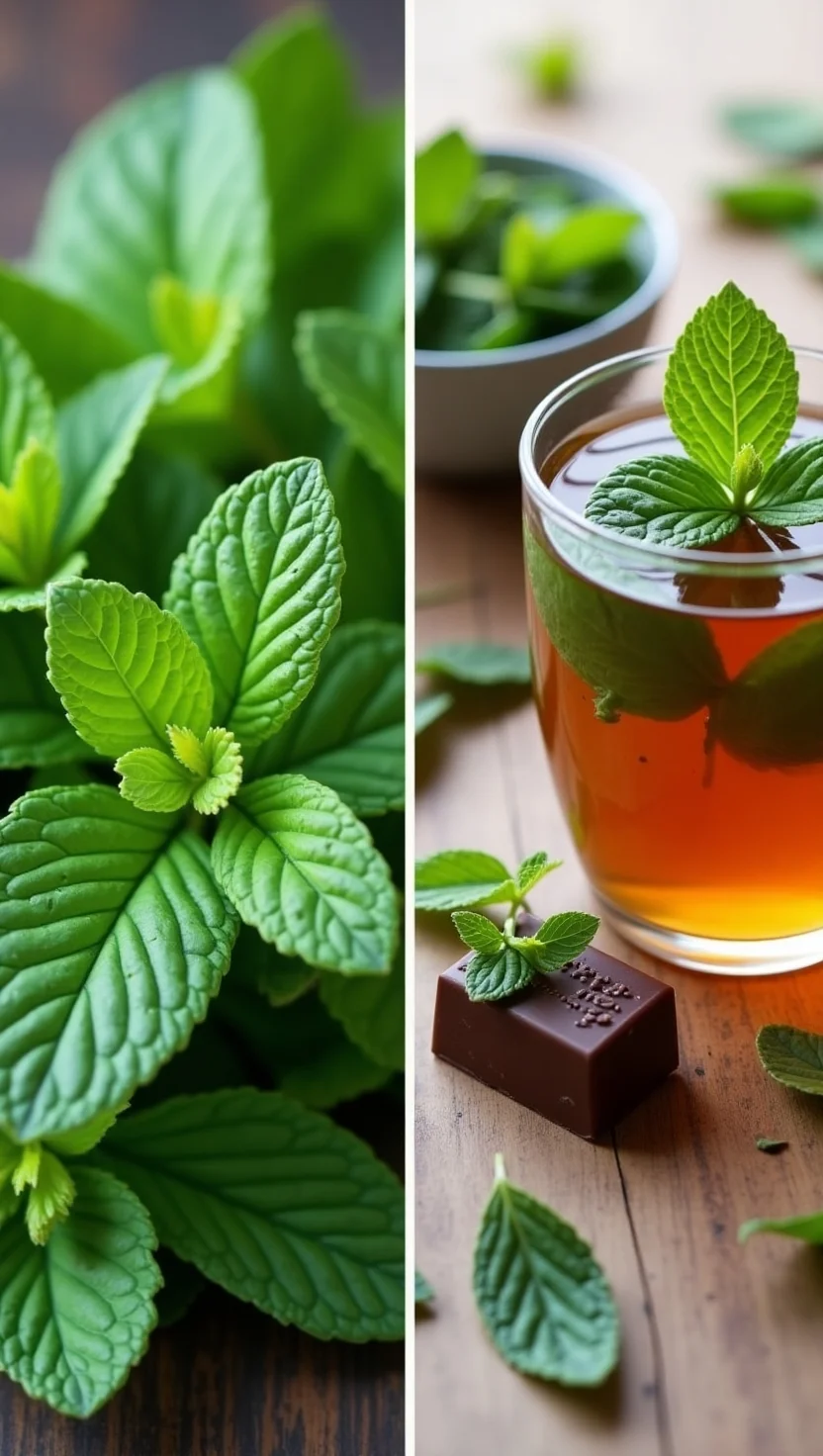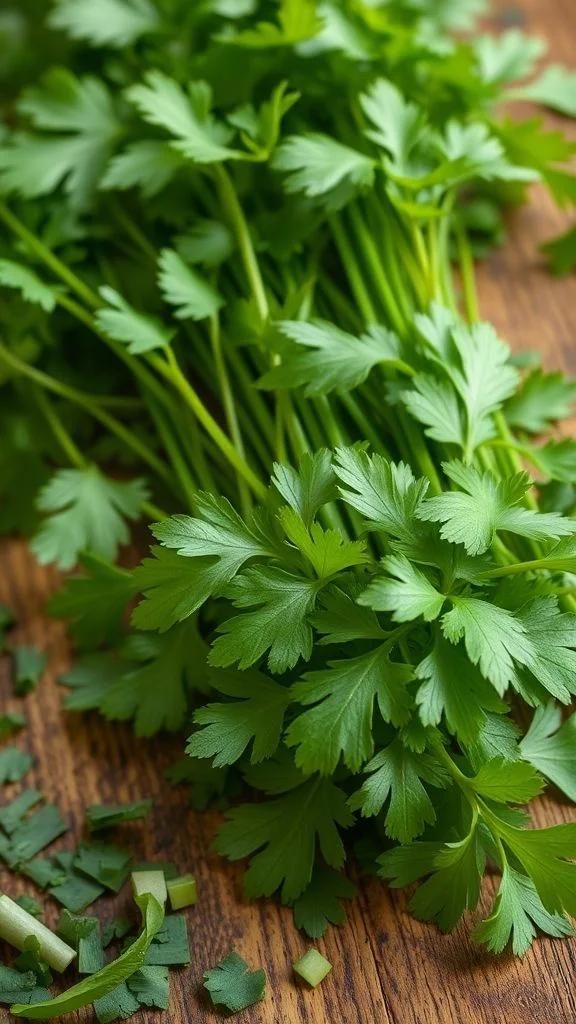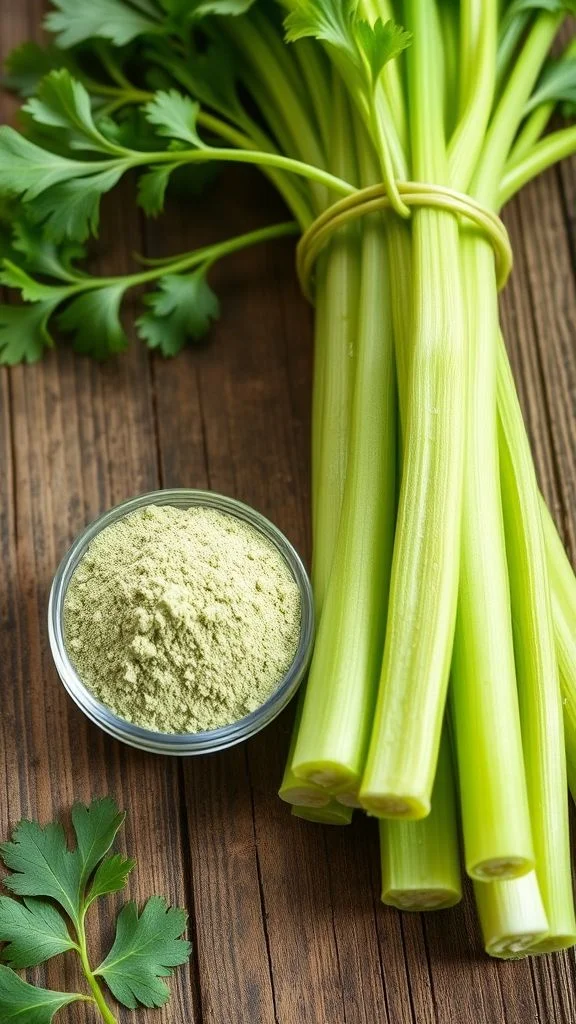Dill (Anethum graveolens) is a distinctive aromatic herb belonging to the celery family, characterized by its delicate, feathery green leaves and aromatic seeds. This versatile herb has been cherished for centuries not only for its unique flavor profile but also for its medicinal properties. Originating from the Mediterranean and Western Asia, dill has spread throughout the world, becoming an essential ingredient in numerous culinary traditions. Did you know that ancient Egyptians used as a soothing medicine and a protection against witchcraft? This fascinating herb has truly stood the test of time, evolving from a simple medicinal plant to becoming the key flavor in everything from kosher dill pickles to trendy snacks like Flamin dill pickle hot cheetos.
Table of Contents
Nutritional and Health Benefits
is not just a flavorful addition to your meals; it’s packed with essential nutrients that contribute to overall health. This herb is an excellent source of vitamins A and C, as well as minerals like manganese and iron. Dill seeds are particularly rich in calcium, making them a valuable addition to plant-based diets.
The health benefits of dil extend beyond its nutritional profile:
- Digestive Health: Both dill leaves and dill seeds have been traditionally used to relieve digestive issues. The essential oils in dill have carminative properties that help reduce gas and bloating.
- Anti-inflammatory Properties: Studies have shown that dil contains flavonoids and monoterpenes that possess anti-inflammatory and antioxidant effects, potentially helping to reduce chronic inflammation.
- Blood Sugar Regulation: Recent research suggests that dil extract may help in managing blood sugar levels, making it potentially beneficial for individuals with diabetes.
- Antimicrobial Effects: Dil essential oil has demonstrated antimicrobial properties against several bacterial strains in laboratory studies.
According to a 2017 study published in the Journal of Food Science, compounds found in can help neutralize free radicals, potentially reducing oxidative stress in the body. This makes dil not just a tasty addition to your meals but also a functional food with potential health-promoting properties.
Culinary Uses and Recipes
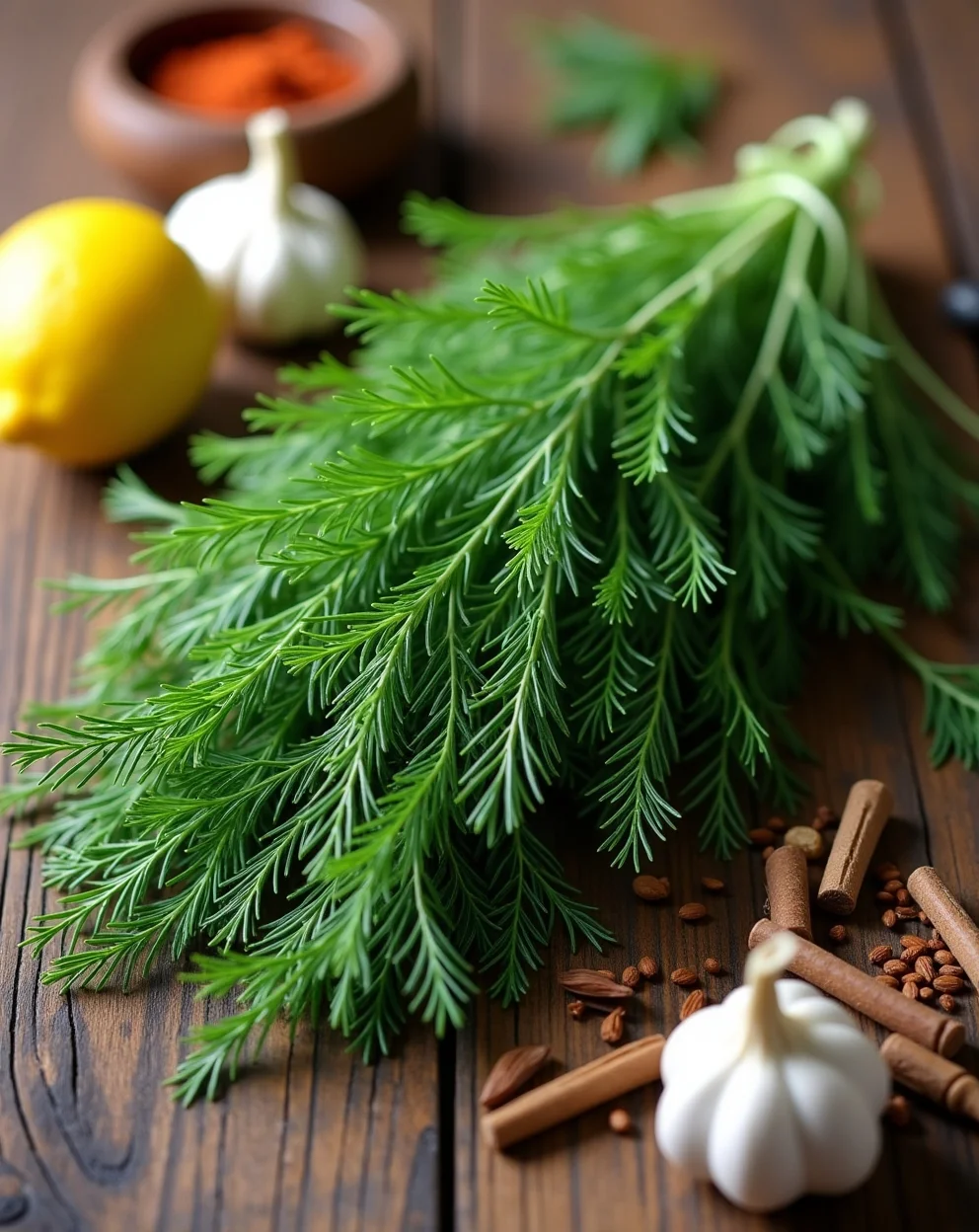
Dill’s distinctive flavor—a unique blend of anise, parsley, and celery with subtle citrus notes—makes it a versatile ingredient in various cuisines worldwide. Fresh dil is commonly used in:
- Scandinavian Cuisine: Where it flavors fish dishes, potato salads, and the famous gravlax
- Eastern European Cooking: Essential in borscht and other traditional soups
- Mediterranean Dishes: Often paired with lemon in Greek tzatziki and various seafood preparations
- Middle Eastern Recipes: Featured in many yogurt-based sauces and salads
The modern food industry has embraced dill’s popularity, incorporating it into various products. Dil pickle hot cheetos have become a sensation among snack enthusiasts, combining the tanginess of dill pickle flavor with the signature heat of hot cheetos. Similarly, spicy dill pickle chips, like the popular Miss Vickie’s spicy dil pickle chips, offer a perfect balance of heat and tanginess that keeps consumers reaching for more.
Recipe 1: Homemade Dill Pickle Seasoning
Creating your own dill pickle seasoning allows you to customize the flavor for various applications:
Ingredients:
- 2 tablespoons dried dill
- 1 tablespoon dill seeds
- 2 teaspoons garlic powder
- 1 teaspoon onion powder
- 1 teaspoon salt
- 1/2 teaspoon citric acid (for tanginess)
Instructions:
- Combine all ingredients in a small bowl.
- Store in an airtight container for up to 3 months.
- Use to season popcorn, roasted potatoes, or sprinkle over french fries for a flavor reminiscent of dil pickle chips.
Recipe 2: Lemon Dill Sauce
This versatile sauce works wonderfully with fish, chicken, or as a dipping sauce:
Ingredients:
- 1/2 cup plain Greek yogurt
- 3 tablespoons fresh dill, finely chopped
- 1 tablespoon lemon juice
- 1 teaspoon lemon zest
- 1 small garlic clove, minced
- Salt and pepper to taste
Instructions:
- Mix all ingredients in a bowl until well combined.
- Refrigerate for at least 30 minutes before serving to allow flavors to develop.
- Store in an airtight container for up to 5 days.
Pro Tip: For maximum flavor, add at the end of cooking hot dishes. High heat can diminish its aromatic compounds. When making kosher dil pickles, the dil seeds provide a more intense flavor than the leaves, making them essential for that authentic taste.
Substitutes and Alternatives
If you find yourself without in your pantry, several herbs can serve as reasonable substitutes, though each brings its unique flavor profile:
- Tarragon: Offers a similar licorice-like quality but with more intensity. Use about 2/3 the amount called for in recipes.
- Fennel Fronds: The feathery leaves of fennel have a mild anise flavor that works well in place of dil, especially in fish dishes.
- Fresh Parsley with Fennel Seeds: Combine 1 tablespoon of fresh parsley with a pinch of crushed fennel seeds to approximate dill’s complex flavor.
- Basil: In some Mediterranean dishes, basil can work as a dil substitute, though the flavor profile is quite different.
When substituting dried dil for fresh in recipes, remember that dried dill has a more concentrated flavor. The general rule is to use one-third the amount of dried dil called for fresh dill. For example, if a recipe calls for 3 tablespoons of fresh dill, use 1 tablespoon of dried dill instead.
It’s worth noting that while these substitutes can work in a pinch, nothing quite captures the unique flavor that makes pickle seasoning or lemon dill sauce so distinctive. The flavor profile that makes products like flamin hot dill pickle cheetos or dil pickle chips so addictively popular is difficult to replicate without actual dil.
How to Dry and Store
Preserving properly ensures you’ll have this versatile herb available year-round for your cooking needs.
Drying Methods
Air Drying:
- Gather dilم stems and tie them together at the base.
- Hang the bundle upside down in a warm, well-ventilated area away from direct sunlight.
- Allow to dry for 1-2 weeks until the leaves crumble easily.
Oven Drying:
- Preheat your oven to the lowest setting (usually around 170°F/75°C).
- Spread dill sprigs in a single layer on a baking sheet.
- Bake with the oven door slightly ajar for 2-4 hours, until completely dry.
Microwave Drying (Quick Method):
- Place dill sprigs between two paper towels.
- Microwave on high in 30-second intervals, checking after each until dry and crispy.
Once dried, store your dried in an airtight container in a cool, dark place. When properly stored, dried dill can retain its flavor for up to one year, though it’s most potent in the first six months.
Storing Dill Seeds
Dill seeds require a different approach:
- Harvest seed heads when they’ve turned brown but before they drop seeds.
- Hang seed heads upside down in a paper bag (the bag will catch falling seeds).
- Once completely dry, store dill seeds in an airtight container.
Properly stored dill seeds can last up to 3-4 years and can be used to make dil seed hot cheetos-inspired seasoning at home or as a key ingredient in homemade dill pickle recipes.
Storage Tip: For fresh , wrap the stems in a slightly damp paper towel, place in a plastic bag, and store in the refrigerator. This method can keep dil fresh for up to a week.
Conclusion and Summary
Dill is truly a culinary superstar that deserves a place in every kitchen. From its nutritional benefits to its distinctive flavor that enhances everything from traditional kosher dil pickles to modern snacks like dil pickle hot cheetos, this herb offers tremendous versatility. Whether you’re using fresh dil fronds in a delicate lemon dill sauce, incorporating dried into your homemade dil pickle seasoning, or experimenting with dil seeds in bread dough (fondly called “dill dough” by baking enthusiasts), this herb continues to prove its worth across culinary traditions.
The remarkable adaptability of dil has allowed it to transition seamlessly from ancient medicinal herb to modern flavor sensation. Its presence in products ranging from artisanal dill relish to mainstream snacks like spicy dill pickle chips demonstrates its enduring appeal across generations and cultures.
I encourage you to experiment with in your cooking, whether by incorporating dil seasoning into your favorite recipes or trying to recreate the bold flavors of commercial products like Miss Vickie’s spicy dil pickle chips at home. This humble herb might just become your new secret ingredient for elevating everyday dishes.
FAQs Section
Q: Can I use dill seeds and dill weed (leaves) interchangeably? A: While they come from the same plant, dil seeds and dill weed have different flavor profiles. seeds have a more pungent, slightly bitter taste similar to caraway, making them ideal for pickling and baking. weed is more delicate with hints of anise and lemon, better suited for fresh applications. In recipes like kosher dil pickles, both are often used together for complexity.
Q: How can I make my own version of flamin hot dil pickle cheetos at home? A: While you can’t exactly replicate the commercial product, you can create a similar flavor profile by making popcorn or baked tortilla chips and tossing them with a mixture of pickle seasoning (dried dill, dil seeds, garlic powder, salt, citric acid) and cayenne pepper or hot paprika for heat. Adjust the spice level to match your preference for that “flamin hot” experience.
Q: Is there a difference between regular pickles and kosher dil pickles? A: Yes, kosher dil pickles traditionally include garlic in the brine along with dill, giving them a more robust flavor profile. The term “kosher” refers more to the style of the pickle rather than religious dietary certification, though many kosher dil pickles are indeed certified kosher.
Q: How long does fresh dill last, and what’s the best way to preserve it? A: Fresh dll typically lasts 3-5 days in the refrigerator. Beyond drying, you can also freeze dil by chopping it and placing it in ice cube trays with a bit of water or oil. Another preservation method is to make dil-infused vinegar or oil, which can last for months while capturing the herb’s flavor.
Q: Are there any side effects or contraindications for consuming dill? A: is generally recognized as safe for most people when consumed in food amounts. However, in medicinal quantities, it may have mild diuretic effects and could potentially interact with certain medications like lithium or drugs that cause photosensitivity. Additionally, those with allergies to plants in the carrot family (such as fennel, coriander, or caraway) might experience allergic reactions to dil as well. As with any herb, it’s best to consult with a healthcare provider if you have concerns about potential interactions with medications.
For more information and to explore the world of herbs, you can visit the following links:
Cilantro: A Fresh Take on a Classic Herb
Top 5 Amazing Mints Benefits, Uses & Recipes
Dried Basil Benefits for Kitchen & Garden
